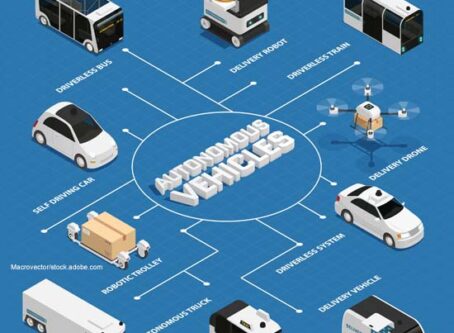NHTSA finalizes ‘first-of-its-kind’ rule for automated vehicle occupants
Calling it a first-of-its-kind final rule, the National Highway Traffic Safety Administration is implementing regulations dealing with occupants in automated vehicles.
After going through the federal rulemaking wringer, the agency plans to soon publish a final rule in the Federal Register addressing occupants in automated vehicles. The new rule marks a first for federal regulatory action adjusting old standards with new standards that relate to automated vehicles.
Until now, the Federal Motor Vehicle Safety Standards for occupants apply only to traditional vehicles requiring a human driver at all times. None of the language within those standards leaves room for interpretation when applying them to automated vehicles.
Consequently, there is uncertainty and confusion among manufacturers and companies testing these vehicles.
“The agency acknowledges that uncertainty continues to exist around the development and potential deployment of (automated) vehicles,” it states in an unofficial version of the final rule. “Nevertheless, NHTSA believes it is appropriate to finalize this action at this time in anticipation of emerging (automated) vehicle designs that NHTSA has seen in prototype form. The current designs generally involve forward-facing row seating and vehicles without manual driving controls.”
Essentially, the final rule modifies the 200 series of the Federal Motor Vehicle Safety Standards to include automated vehicle configurations. Specifically, vehicles that lack manual driving controls. The agency’s amendments are crafted to minimize changes to the original language. Sections 571.201 through 571.227 address crashworthiness.
The new rule ensures that automated vehicles are held to the same safety standards as traditional vehicles.
Impact on safety
Despite claims by automated vehicle advocates and the nature of the amendments, the agency is declining to make any safety claims that may derive from the new rule.
“The final rule is assumed to have no effect on the per-mile risk of travel in (automated vehicles), as it does not revise, remove, or establish anything associated with their safety performance,” the agency explained. “That is, the removal of manual steering controls is not assumed to offer any direct safety benefit or detriment for travel in (automated vehicles).”
However, NHTSA acknowledges that changes in automated vehicle demand associated with the final rule could increase their use. As a result, safety outcomes associated with the final rule would be equal to the net effects of: (1) changes in per-mile fatality and injury risk for travel that is shifted from conventional vehicles to automated vehicles; and (2) incremental fatalities and injuries that would not have taken place in any vehicle otherwise.
Impact on costs
For the most part, the new rule may drive down costs for manufacturers.
The agency’s new rule will eliminate the need for automated vehicle manufacturers to equip vehicles with redundant manual driving controls in vehicles that do not have manual driving capabilities. Consequently, the cost impacts will be driven predominantly by the per-vehicle costs savings to each vehicle that would no longer need certain manual controls and the number of vehicles produced each year that will be produced without those controls. The agency estimates those cost savings to be about $1,000 per vehicle.
New standards will also reduce the number of regulations for which manufacturers seek exemptions. That will save administrative costs for both manufacturers and NHTSA.
What’s not included?
There have been changes since the notice of proposed rulemaking published in March 2020, including declining suggestions made in comments by stakeholders.
To start, the final rule only applies to automated vehicles that have seating configurations similar to traditional vehicles – i.e., forward-facing, front seating positions (conventional seating). The agency notes that additional research is necessary to understand and address different safety risks posed by vehicles with unconventional seating arrangements (e.g., rear-facing seats or campfire seating).
The agency intentionally did not propose to change the definition of “driver” to include automated driving systems. Among the reasons for that decision:
- The agency said it is not appropriate to consider changes to such a fundamental and ubiquitous concept (“driver”) in a rulemaking that focused solely on the 200-Series without completing the additional research necessary to address implications for those other standards.
- The agency determined that revisiting the definition of driver would best be done in a different context – e.g., if the agency undertakes defining the automated driving system itself.
The agency said children should not occupy the “driver’s” position when an automated vehicle is operating in automated mode and steering controls are present, given that the driver’s seating position has not been designed to protect children in a crash.
The proposed rule included a provision that requires automated vehicles to suppress vehicle motion when a child is detected in the “driver’s” seat. However, the agency nixed that provision after concluding it needs more information regarding child safety in automated vehicles. LL









